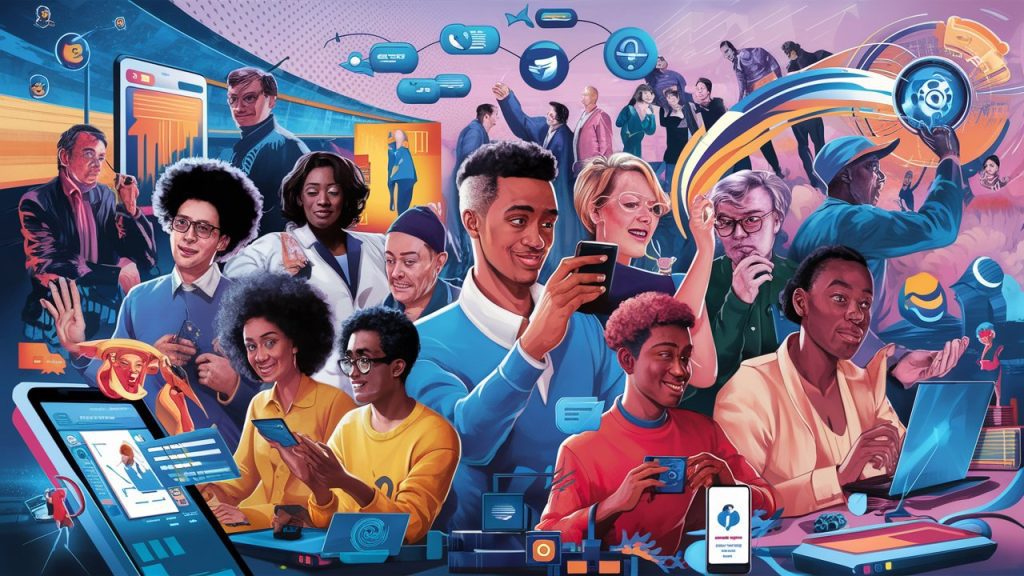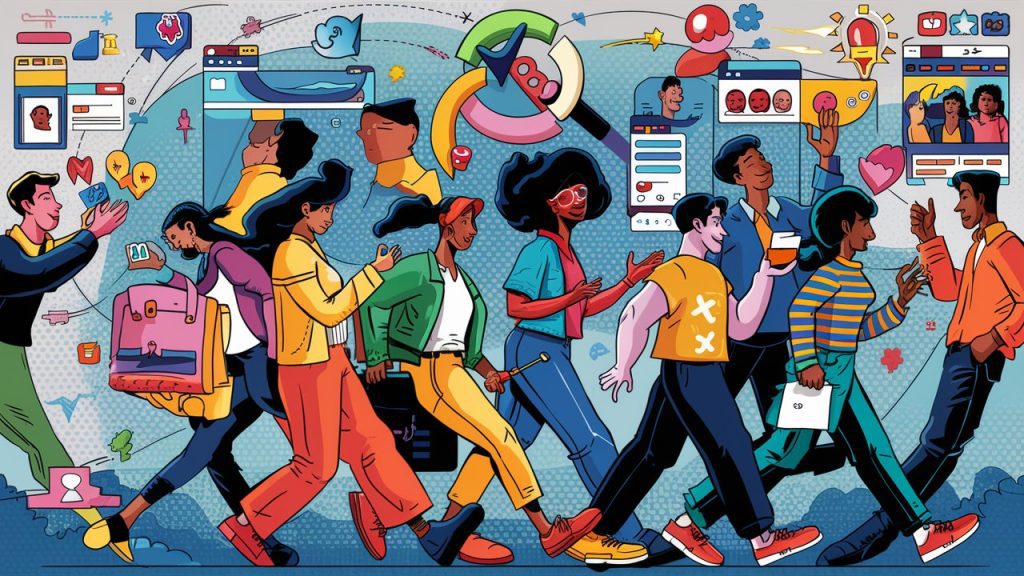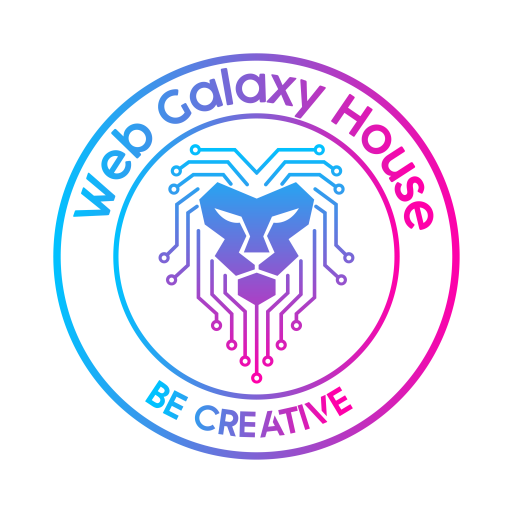“Proven Ways To Increase Customer Engagement And Loyalty”
Boost Customer Engagement
Customer engagement refers to the ongoing interactions between a business and its customers, aimed at fostering loyalty, satisfaction, and long-term relationships. It encompasses all touchpoints, from the initial point of contact to post-purchase support, and is essential for driving growth and sustainability.
The Importance of Customer Engagement
Engaged customers are more likely to become repeat buyers, recommend the brand to others, and contribute positively to the company’s reputation. These interactions help build a strong emotional and rational connection with customers, leading to increased brand loyalty and higher lifetime value.
Some Importance of Customer Engagement are discussed below
- Increases Customer Loyalty: Engaged customers are more likely to return and make repeat purchases.
- Enhances Customer Satisfaction: Positive interactions lead to greater customer satisfaction and positive experiences.
- Boosts Revenue: Loyal and engaged customers contribute to higher sales and revenue growth.
- Strengthens Brand Advocacy: Engaged customers are more likely to recommend the brand to others.
- Improves Customer Retention: Effective engagement strategies reduce customer churn and increase retention rates.
- Builds Emotional Connections: Strong engagement fosters emotional bonds between the brand and customers.
- Provides Valuable Feedback: Engaged customers provide insights and feedback that help improve products and services.
- Differentiates from Competitors: A focus on engagement sets a brand apart in a crowded marketplace.
- Supports Sustainable Growth: Consistent engagement ensures long-term business sustainability and success.
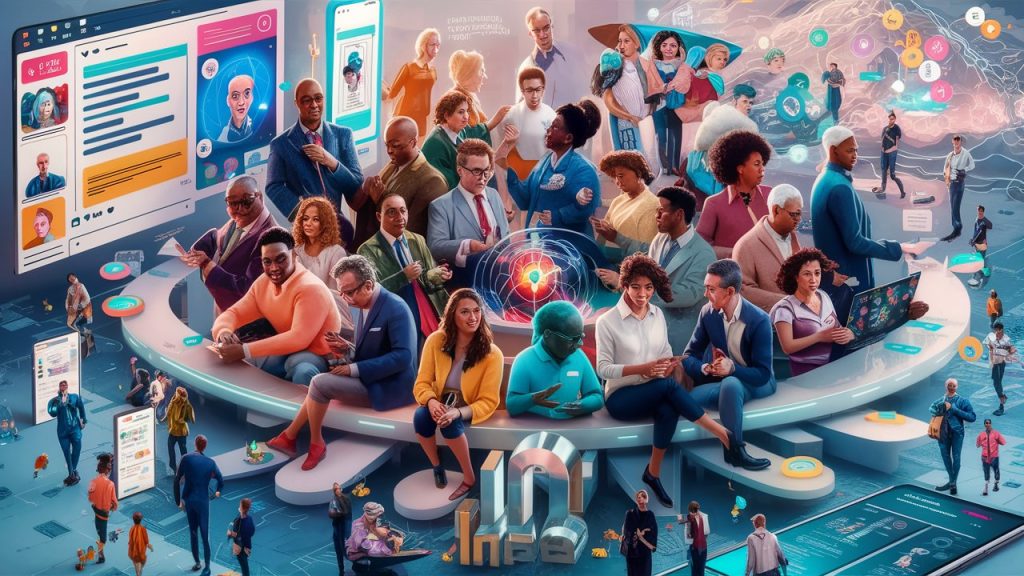
Types of Customer Engagement
Actually there are three types of Customer engagement…
- Emotional Engagement Emotional engagement focuses on creating an emotional bond between the brand and the customer. This involves understanding customer needs, values, and desires. Brands that excel in emotional engagement often use storytelling, personalized communication, and community-building activities to connect with their audience on a deeper level.
- Rational Engagement Rational engagement is about providing practical value to customers. This includes delivering high-quality products, offering competitive prices, and ensuring excellent customer service. Brands that prioritize rational engagement emphasize the tangible benefits and advantages of their offerings.
- Social Engagement Social engagement leverages social media platforms and online communities to interact with customers. This type of engagement involves responding to comments, sharing user-generated content, and collaborating with influencers. It helps in creating a sense of community and fostering direct communication with the audience.
By leveraging these types of engagement, businesses can create well-rounded strategies that connect with customers on multiple levels, driving loyalty and satisfaction.
Enhancing customer engagement involves several key strategies. Personalization is crucial, as tailoring products, services, and communications to individual preferences makes customers feel valued. Content marketing plays a significant role by providing valuable, relevant content that educates, entertains, or inspires customers.
Strategies for Enhancing Customer Engagement
Actively seeking and responding to customer feedback through surveys and reviews helps improve products and services, showing customers that their opinions matter. Implementing loyalty programs that reward repeat business and referrals encourages long-term commitment.
Providing a seamless omni-channel experience ensures consistent quality across all customer touchpoints.
Engaging with customers on social media, offering excellent customer support, and building a sense of community around the brand further enhance engagement.
Incorporating gamification elements and sending targeted, personalized email marketing campaigns also contribute to a more engaging customer experience. By combining these strategies, businesses can create strong, lasting connections with their customers.
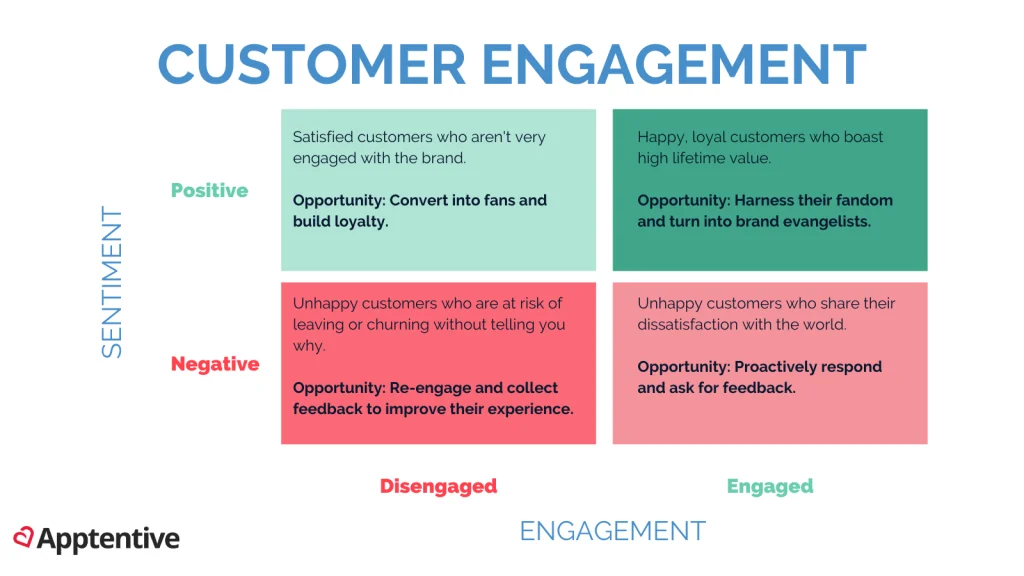
Five Strategies are…
- Personalization: Personalization involves tailoring products, services, and communications to individual customer preferences. By using customer data and advanced analytics, businesses can offer personalized experiences that resonate more strongly with each customer. Tools like Customer Relationship Management (CRM) systems play a crucial role in achieving effective personalization.
- Content Marketing Creating and distributing valuable content is a powerful way to engage customers. Content marketing can include blogs, videos, podcasts, and social media posts that provide useful information, entertain, or inspire. Effective content marketing not only attracts potential customers but also keeps existing ones engaged and informed.
- Customer Feedback and Surveys Actively seeking and responding to customer feedback is vital for continuous improvement. Conducting surveys, gathering reviews, and monitoring social media conversations provide insights into customer satisfaction and areas for enhancement. Implementing changes based on this feedback demonstrates that the business values its customers’ opinions.
- Loyalty Programs Loyalty programs reward customers for their continued patronage. Successful loyalty programs incentivize repeat purchases and deepen the customer’s connection with the brand.
- Omni-channel Engagement providing a seamless experience across multiple channels is essential for modern customer engagement. Whether customers interact with the brand through a website, mobile app, social media, or in-store, their experience should be consistent and integrated. Omni-channel engagement ensures that customers can connect with the brand in their preferred way.
Measuring Customer Engagement
Measuring customer engagement is essential for understanding how well a business is connecting with its customers and identifying areas for improvement. Here are the five key methods and metrics for measuring customer engagement:
1. Key Performance Indicators (KPIs)
- A high NPS indicates strong engagement and satisfaction.
- Customer Satisfaction (CSAT) Score: Assesses how satisfied customers are with a product, service, or interaction. This metric is often collected through post-interaction surveys.
- Customer Lifetime Value (CLV): Calculates the total revenue a business can expect from a single customer over time. Higher CLV suggests deeper engagement and loyalty.
- Customer Retention Rate: Indicates the percentage of customers who continue to do business with a company over a specified period. High retention rates reflect strong engagement efforts.
- Churn Rate: Measures the percentage of customers who stop doing business with a company during a given timeframe. Lower churn rates suggest effective engagement strategies.
2. Tools and Technologies
- Analytics Platforms: Tools like Google Analytics, Hub Spot, and others track website and app engagement metrics such as page views, session duration, bounce rate, and conversion rates.
- Customer Relationship Management (CRM) Systems: CRMs like Salesforce and Zoho track interactions, transactions, and customer feedback, providing a comprehensive view of engagement levels.
- Social Media Analytics: Platforms like Facebook Insights, Twitter Analytics, and Instagram Insights measure engagement metrics such as likes, shares, comments, and follower growth.
3. Surveys and Feedback Mechanisms
Conducting regular surveys and collecting feedback helps gauge customer sentiment and identify areas for improvement. Surveys can include questions about satisfaction, preferences, and suggestions for enhancing the customer experience.
4. Behavioral Metrics
- Usage Frequency: Tracks how often customers use a product or service. High usage frequency indicates strong engagement.
- Engagement Rate: Measures the level of interaction customers have with content, such as clicks, likes, shares, and comments.
- Repeat Purchase Rate Calculates the percentage of customers who make multiple purchases over time, reflecting ongoing engagement.
5. Data-Driven Decision Making
– Utilizing the collected data to inform and refine engagement strategies is crucial. Analyzing trends, patterns, and feedback helps businesses make informed decisions to enhance customer experience and drive better results.
Employing these methods and metrics, businesses can effectively measure customer engagement, identify strengths and weaknesses, and continuously improve their engagement strategies to foster stronger, more lasting relationships with their customers.
Challenges in Customer Engagement
Customer engagement is critical for business success, but it comes with several challenges that companies must address to create lasting and meaningful connections with their customers.
1. Maintaining Consistency
Challenge: Ensuring consistent engagement across all customer touchpoints (online, in-store, mobile) can be difficult.
Solution: Develop a unified strategy and align messaging, quality, and service standards across all channels to provide a seamless customer experience.
2. Managing Customer Expectations
Challenge: Balancing high customer expectations with realistic deliverables can be challenging. Customers expect personalized, high-quality interactions every time.
Solution: Clearly communicate what customers can expect and strive to meet or exceed those expectations. Transparency and honesty are key to managing customer perceptions.
3. Handling Negative Feedback
Challenge: Dealing with customer complaints and negative feedback can be tough and may impact the brand’s reputation.
Solution: Address negative feedback promptly and constructively. Use it as an opportunity to improve products and services, and demonstrate to customers that their concerns are taken seriously.
4. Adapting to Technological Changes
Challenge: Keeping up with rapidly evolving technology and customer preferences can be overwhelming.
Solution: Stay informed about the latest trends and technological advancements. Invest in the necessary tools and training to adapt quickly and effectively.
5. Data Privacy and Security
Challenge: Hence Protecting customer data while leveraging it to personalize experiences poses significant risks and challenges.
Solution: Communicate your data privacy policies clearly to build customer trust.
6. Engaging Diverse Customer Segments
Challenge: Different customer segments have unique needs and preferences, making it difficult to engage everyone effectively.
Solution: Segment your customer base and tailor engagement strategies to each group. Use targeted marketing and personalized content to address the specific needs of different segments.
7. Resource Allocation
Challenge: Limited resources (time, budget, personnel) can hinder the implementation of comprehensive engagement strategies.
Solution: Prioritize engagement initiatives based on their potential impact. Focus on high-return activities and continuously evaluate and adjust resource allocation.
8. Measuring Engagement Effectively
Challenge: Accurately measuring customer engagement and understanding its impact can be complex.
Measuring customer engagement is essential forSolution: Use a combination of quantitative and qualitative metrics to get a complete picture of engagement. Regularly review and refine measurement techniques to ensure accuracy and relevance.
9. Keeping Engagement Efforts Authentic
Challenge: Customers can detect inauthentic efforts, which can harm the brand’s credibility.
Solution: Ensure all engagement efforts are genuine and aligned with the brand’s values. Authentic interactions build trust and foster deeper connections with customers.
By addressing these challenges proactively, businesses can enhance their customer engagement strategies, resulting in stronger relationships, increased loyalty, and sustained growth.
Future Trends in Customer Engagement
Here are Three types of Trends.
- Artificial Intelligence and Automation AI and automation are transforming customer engagement by enabling personalized interactions at scale. Chabot’s, predictive analytics, and automated marketing campaigns are examples of how these technologies can enhance engagement.
- Virtual and Augmented Reality VR and AR offer immersive experiences that can significantly boost customer engagement. These technologies allow customers to experience products and services in innovative ways.
- Sustainability and Social Responsibility Customers increasingly value ethical and sustainable practices. Brands that prioritize corporate social responsibility (CSR) and demonstrate commitment to sustainability can engage customers who share these values.
Appendices of Customer Engagement Strategies
To provide a comprehensive understanding of customer engagement strategies, the appendices section includes additional resources, case studies, and a glossary of terms. These elements help deepen the reader’s knowledge and offer practical examples and further reading materials.
Case Studies
Purpose: Illustrate real-world applications of customer engagement strategies.
Examples: Detailed analyses of successful customer engagement initiatives by leading companies.
- Company A: How a retail giant used personalized email marketing to boost customer loyalty.
- Company B: The role of social media interaction in enhancing customer satisfaction for a tech company.
- Company: A hospitality brand’s use of loyalty programs to increase repeat bookings and customer retention.
Resources for Further Reading
Articles:
- “The Future of Customer Engagement” by Forbes
- “Strategies for Customer Engagement”
Websites:
- HubSpot Blog: Offers a wide range of articles on customer engagement tactics.
- Salesforce Resources: Provides tools and insights on CRM and customer engagement.
- Customer Think: A community of business leaders focused on customer-centric strategies.
Glossary of Terms
- Net Promoter Score (NPS): A metric that measures customer loyalty by asking how likely customers are to recommend a company to others.
- Customer Satisfaction (CSAT) Score: A measure of how satisfied customers are with a product, service, or interaction.
- Omni-channel: An approach that provides a seamless customer experience across various channels (online, mobile, in-store).
- Engagement Rate: The level of interaction customers have with content, such as clicks, likes, shares, and comments.
- Customer Management: Systems and strategies for managing a company’s interactions with current and potential customers.
- Gamification: Incorporating game-like elements into non-game contexts to engage and motivate customers.
- Churn Rate: thereafter The percentage of customers who stop doing business with a company during a given timeframe.
- Segmentation: Dividing a customer base into groups based on shared characteristics for targeted marketing.
By including these appendices, the content provides a well-rounded view of customer engagement strategies. Case studies offer practical insights and examples, further reading resources expand the knowledge base, and the glossary ensures clarity and understanding of key terms. These elements collectively enhance the reader’s ability to implement effective customer engagement practices in their own businesses
Some FAQs about Customer engagement:
1. What is customer engagement?
Customer engagement refers to the interactions and connections a business builds with its customers through various touchpoints, aiming to foster loyalty, satisfaction, and long-term relationships.
2. Why is customer engagement important?
Customer engagement is crucial because it leads to higher customer loyalty, increased satisfaction, better brand advocacy, and ultimately, higher revenue and business growth.
3. What are some common customer engagement strategies?
Common strategies include personalization, content marketing, loyalty programs, omni-channel engagement, social media interaction, customer feedback collection, and excellent customer support.
4. How can businesses measure customer engagement?
However, Businesses can measure engagement using KPIs such as Net Promoter Score (NPS), Customer Satisfaction (CSAT) score, Customer Lifetime Value (CLV), retention rate, and engagement rate. Analytics tools and CRM systems also provide valuable insights.
5. What are the challenges in maintaining customer engagement?
Challenges include maintaining consistency across channels, managing high customer expectations, handling negative feedback, adapting to technological changes, ensuring data privacy, engaging diverse customer segments, and resource allocation.
6. What role does content marketing play in customer engagement?
Content marketing provides valuable, as well as relevant content that educates, entertains, or inspires customers, keeping them engaged and informed while building trust and loyalty.
7. How can social media be used for customer engagement?
Social media allows businesses to interact directly with customers, respond to their queries, share user-generated content, run interactive campaigns, and create a community around the brand.
8. What is omni-channel engagement?
Omni-channel engagement provides a seamless and integrated customer experience across multiple channels (online, mobile, in-store), ensuring consistent quality and messaging.
9. How can businesses handle negative feedback effectively?
Businesses should address negative feedback promptly and constructively, use it as an opportunity to improve products and services and show customers that their concerns are taken seriously.
Customer engagement is an ongoing process that requires continuous effort and innovation. By understanding and addressing the diverse needs and preferences of customers, businesses can build lasting relationships that drive success. Prioritizing customer engagement through personalized experiences, valuable content, and effective feedback mechanisms is essential for any business aiming to thrive in today’s dynamic market.
© Copyright By Web Galaxy House
